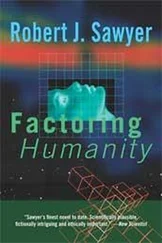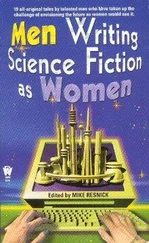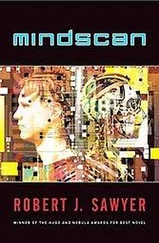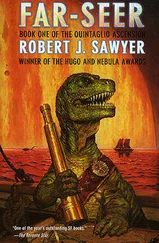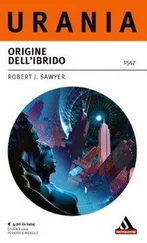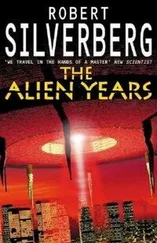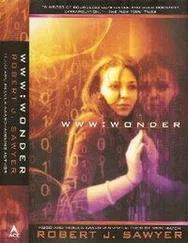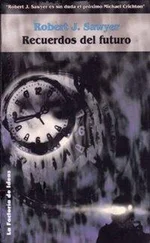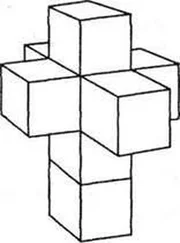Kelkad and the other Tosoks were in separate cars, on their way back from the Criminal Courts Building. The connection was staticky. There was a long pause, then a spate of faint Tosok language—but not in Kelkad’s voice—then some more of the alien tongue; this time it was Kelkad. And then the voice of the translator. “Describe the injury, and the way in which it was made.” Frank realized Kelkad had to be moving the cellular back and forth between his translator and his ear slit.
Frank lifted his hand up off his pressure bandage. Although the tie was covered with Tosok blood—which was crystallizing, like a thin layer of ice, rather than clotting the way human blood did—the total volume if bleeding seemed to be tiny. “He’s been shot by a metal projectile—presumably lead. He’s lying on his back, is still breathing, but appears to be unconscious. The bullet entered between the front arm and the left leg, about eight inches below the breathing orifice. I can’t tell what angle it moved through the body. I was applying pressure to the wound, but it seems to have stopped bleeding, and the blood is crystallizing.”
There was a sound from Kelkad, and noises from the translator—plus traffic sounds, and a siren. The car Kelkad was in was now rushing to the scene.
“You will probably not harm him by rolling him over onto his front,” said Kelkad. “Did the bullet go all the way through the body?”
Frank handed the phone to the cop and grabbed the upper part of Hask’s left leg with both hands, feeling the odd alien skeleton beneath the skin, then rolling him ninety degrees. He examined the back of Hask’s dun-colored tunic, but could find no exit hole. He looked at the cop. “Tell him there’s no sign that the bullet came out.”
She did so, then she listened for a moment. “Kelkad asks you to confirm that lead is atomic number eighty-two.”
“What?” said Frank. “Christ, I have no idea.”
“He says lead is highly toxic to Tosoks. He says the bullet will have to be removed within the hour.”
“Where’s that damn ambulance?” said Frank.
“It’s coming,” said the other cop, who had rejoined them. He pointed in the distance. A white van with flashing lights on its roof was approaching.
Frank rose to his feet. One of the other police officers came over to him.
“The assailant’s name is Donald Jensen, according to his ID. I called it in; he’s got a small record—disturbing the peace, mostly.”
Frank looked over at the man, who was now on his feet with his hands cuffed behind his back. He was clean-cut, with short blond hair, and he was wearing a sports jacket with patches on the elbows. The left side of his face was badly scraped from where the officers had forced him down onto a paved walkway. His blue eyes were wide. “Death to all the devils!” he shouted.
The ambulance pulled up at the curb, and two burly men got out. They immediately opened the vehicle’s rear doors and brought a stretcher over to Hask.
Just behind the ambulance, the cars carrying the other Tosoks pulled up on the access road. Their doors flew open, and the six Tosoks came running across the field with giant strides. Lagging far behind them were the police officers who were supposed to be their escorts.
Frank looked like he expected a lynching. “Get him out of here,” he ordered the cops, pointing at the blond man. “Get him out of here right now.”
The cops nodded, and hustled the assailant into a car. Meanwhile the two ambulance attendants had transferred the alien to their stretcher and were now lifting him off the ground.
The Tosoks arrived. Their breathing orifices seemed to be spasming, and they each lifted their arms away from their bodies, possibly to help dissipate heat. Kelkad and Stant came immediately over to Hask and began peering at the wound. They chatted among themselves, then Stant’s translator spoke: “There is insufficient time to get him up to the mothership. Your germs are no problem for us, so we do not need a particularly sterile place to work. But we will need surgical implements.”
“We’re taking him to the Los Angeles County-USC Medical Center,” said one of the attendants. “It’s a huge hospital; they’ll have everything you’ll need there.”
“I’m coming with you,” said Frank.
They got the alien body into the back of the ambulance, and then Kelkad and one of the attendants climbed in the rear door. The other attendant got into the driver’s seat and Frank hopped into the passenger’s seat. The ambulance took off, a police car carrying Stant providing an escort.
“Frank,” said Kelkad’s voice, from the back of the ambulance. Frank turned around and looked into the rear compartment. “Who is responsible for this act, Frank?”
“We have the man,” said Frank. “He sounded like a religious fanatic to me. Don’t worry, Kelkad. He will pay for his crimes.”
“Shooting one of our people could be construed as an act of war,” said Kelkad.
“I know, I know. Believe me, you will have every apology possible, and I promise you the man will be punished.”
“A fanatic, you said?”
“He called Hask a devil—a demon, a supernatural creature.”
“His lawyer will try the insanity defense, then.”
The ambulance’s tires squealed as the driver took it through a tight turn.
Frank shrugged. “It’s possible.”
“See to it that my faith in this thing you call justice is not betrayed,” said Kelkad.
They continued on to the hospital, siren wailing.
Frank and Kelkad got out of the ambulance at emergency admitting. “Of all our crew, the best choice for performing the surgery now is Stant, our biochemist.”
Stant had arrived in one of the police cruisers at the medical center moments after the ambulance did. He was still rubbing his back arm, which had been crushed behind him in the car’s unmodified seat, but his tuft moved forward in agreement. “I can do the operation,” he said, “but I will need a human to assist me—not so much in procedures, but in equipment.”
He looked out at the large crowd of doctors and nurses who had gathered in the ER lobby, as well as the many often-bloodied, mostly Latino, mostly indigent patients waiting for treatment. “Is there someone who will help?”
“Yes, certainly,” said a black man of about fifty.
“I’d be glad to,” said a white man in his forties.
A third person simply cleared her throat. “Sorry, boys—rank hath its privileges. I’m Carla Hernandez, chief of surgery here.” She looked at Stant. “I’d be honored to assist you.” Hernandez was in her mid-forties, with short-cropped salt-and-pepper hair.
“Very well. Let us get to work. Do you have devices for seeing into the body?”
“X rays. Ultrasound.”
“X rays are acceptable. We will need pictures to determine the depth of the bullet.”
Hernandez nodded. “I’ll take Hask down to radiology, then prep him for surgery.” She pointed to the black man who had volunteered a few moments before. “Paul, take Stant to surgical supplies and let him select whatever tools he’ll need…”
The operation went quickly. Stant was obviously a practiced surgeon—so practiced that it occurred to Frank, watching from the packed observation gallery above, that he would have been quite capable of doing the dissection of Calhoun.
There was very little blood, despite the deep incision Stant made. The other doctors watching with Frank seemed amused by the way Stant operated: he held the X ray up to his rear pair of eyes with his back hand, and watched the operation with his front eyes, wielding the scalpel with his front hand. It took about eight minutes to complete the extraction of the bullet, which Stant pulled out with tongs and dropped into a stainless-steel pan Hernandez was holding.
Читать дальше

